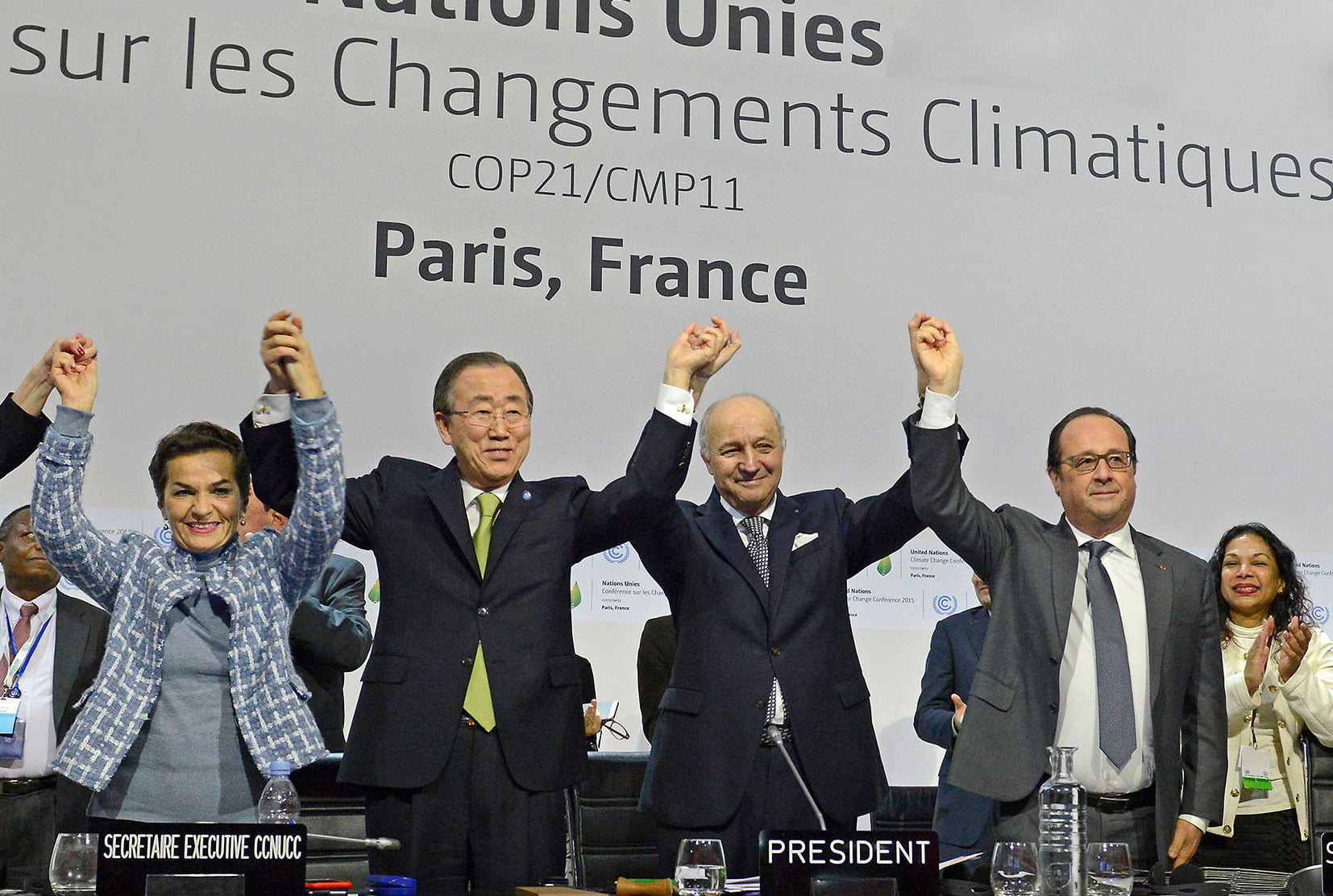On Sunday, India formally ratified the Paris Agreement. And on Tuesday, the European Union did the same. Now, in the coming days several individual European countries are expected to ratify the agreement which will put the agreement past the required threshold for entry-into-force of 55 countries representing 55% of total greenhouse gas emissions.
This is a big deal. It means that the Paris Agreement will come to life years earlier than was originally expected, which in turn means the targets and ambitions embedded in the Paris agreement will start having an effect sooner rather than later.
What does entry into force mean?
The Paris Agreement is a unique kind of global compact. Much of the substance of the agreement are the voluntary measures that countries agree to take. These were called National Determined Contributions–basically, the specific actions that each country will take to curb emissions and promote sustainability. (The USA, for example, has pledged to cut emissions by 26-28 per cent below its 2005 level by 2025.)
But while the substance of the agreement is pretty much up to each individual country, the nuts and bolts of monitoring progress and implementing key parts of the deal requires a common set or procedures and processes. There were hundreds of details — large and small — that negotiators who crafted the Paris Agreement left to be decided only once the agreement entered into force. Details like setting up a public website to serve as a registry for county’s commitments, to key questions about the precise mechanisms by which countries’ emissions would be monitored and measured, were all left to a governing body that would only come into existence 30 days after the 55 for 55% threshold was reached.
Now that the threshold is passed, the date by which these details will begin to be hammered out has moved up from some point in 2020 (as was originally anticipated by the negotiators in Paris) to early November 2016.
Now that both thresholds have passed, the date by which these details will be hammered out has moved up from some point in 2020 (as was originally anticipated by the negotiators in Paris) to early November 2016. “What early entry into force means is that rather than adopt these finer details in 2020, there is greater pressure to do so earlier now that the first meeting of the Parties to the Paris Agreement will be convened next month.” says Eliza Northrop of the World Resources Institute. “This provides countries with more certainty and guidance.”
The overall effect of this could be to encourage countries to ratchet up the ambition of their own climate action plans by the time countries gather for another major climate conference in 2020. “When countries have the opportunity to update or revise their targets by 2020, all these rules and finer details will be decided, which could increase the likelihood that more ambitious plans are presented,” she says
Finally, the fact that the agreement has crossed the necessary threshold before election day in the USA is a boon. Donald Trump has vowed to renege on the Paris Agreement. But its entry into force makes it far more legally complicated for the USA (or any country that is a party to the treaty) to walk away from it. The norms of international law suggest that once this agreement has entered into force, there is no real mechanism for overturning it.
Beyond this US centric view, the early entry into force of the Paris Agreement is a profound demonstration of the urgency of climate action from a wide array of governments. “This is significant because it shows a broad political commitment towards the Paris Agreement — countries that have ratified it include developed and developing countries, large and small economies, and large and small emitters,” says Northrop.
Now, with early ratification, they all can jumpstart the process of actually implementing the agreement and averting a global catastrophe.
